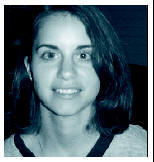|
PRACTICAL
SIGNIFICANCE
When
comparing
ultrasound
treatments
providing
identical
total
energy
delivery
a
continuous
duty
cycle
has a
greater
influence
on
skeletal
muscle
regeneration
following
blunt
trauma
than
does a
pulsed
duty
cycle.
STUDY
BACKGROUND
Non-thermal
ultrasound
is
commonly
used in
an
attempt
to
improve
tissue
repair
and
regeneration,
although
the
efficacy
of this
practice
is not
firmly
established.
Ultrasound
is
normally
described
in terms
of duty
cycle
and
spatial
averaged
intensity
(SAI;W/cm2).
The
combination
of these
two,
spatial
averaged
temporal
averaged
intensity
(SATA),
provides
an
indication
of total
energy
delivered
per unit
of time.
There is
an
untested
suggestion
that
non-thermal
ultrasound
treatments
with an
equivalent
SATA,
but that
use
different
combination
of duty
cycle
and SAI
might
produce
different
results.
It has
been
speculated
that for
a given
SATA, a
low SA
with
continuous
duty
cycle
treatment
might
produce
better
effects
than the
more
common
practice
of a
moderate
SAI with
pulsed
duty
cycle
treatment.
OBJECTIVE
To
examine
the
influence
of
non-thermal
ultrasound
on
markers
of
skeletal
muscle
regeneration
and to
compare
4
different
combinations
of duty
cycle
and SAI
representing
two
common
SATA
intensities.
DESIGN
AND
SETTING
A 2x2x2
factorial
design
comparing
treatment
(ultrasound
or
control),
duty
cycle
(20% or
100%)
and SATA
(0.1
W/cm2 or
0.3
W/cm2)
was
used. A
bilateral
contusion
injury
to the
gastrocnemius
muscle
via a
drop
mass
technique
was
performed.
Animals
were
randomly
assigned
to one
of 4
different
US
treatment
groups:
1)
0.5W/cm2
at 20%
duty
cycle (SATA,
0.1
W/cm2);
2)
1.5W/cm2
at 20%
duty
cycle (SATA,
0.3
W/cm2);
3)
0.1W/cm2
100%
duty
cycle (SATA,
0.1
W/cm2);
and 4)
0.3W/
cm2 100%
duty
cycle (SATA,
0.3
W/cm2).
US
administration
commenced
24-hrs
post
contusion
injury,
and was
delivered
5
minutes
daily on
4
consecutive
days
(Figure
1.)
SUBJECTS
Forty
male
8-month
old
Wistar
rats
were
used in
this
study in
which
the
protocol
was
ILACUC
approved.
MEASUREMENTS
Various
indices
of
skeletal
muscle
regeneration
were
measured:
muscle
mass
(g),
fiber
cross
sectional
area
(micrometers2),
and
centrally
localized
nuclei
(n).
RESULTS
A
multivariate
treatment
x SATA
interaction
was
found
for all
skeletal
muscle
regeneration
variables
(P =
.017).
US
increased
muscle
mass
more
than no
treatment
(3.34g
vs.
3.18g; P
<.0001)
and
increases
in
muscle
mass was
found
with the
continuous
US
treatment
compared
to the
pulsed
duty
cycle
treatment
at the
same
SATA
(3.46g
vs.
3.20g; P
= .019).
An
increase
in the
number
of
centrally
located
nuclei
was
found
compared
to the
nontreated
leg
(6.2%
vs.
5.2%; P
= .079)
as well.
The
interaction
of
treatment
and SATA
on fiber
cross
sectional
area (P
= .021)
and
centrally
located
nuclei
(P =
.016) is
highly
significant;
suggesting
that if
treated,
SATA
makes a
difference
on both
CSA and
centrally
located
nuclei.
CONCLUSIONS
The
specific
non-thermal
ultrasound
treatments
we
studied
have
beneficial
effects
on
skeletal
muscle
regeneration
following
blunt
trauma.
These
treatments
increased
muscle
mass,
fiber
cross
sectional
area and
centrally
located
nuclei.
Continuous
duty
cycle US
at low
SATA
intensities
increases
the mass
of
regenerating
muscle
compared
to a
pulsed
duty
cycle
treatments
with the
same
SATA
intensity.

Duty
Cycle
|
Figure 1. Muscle mass treated with ultrasound at both a pulsed and continuous duty cycle. |
Publication
and
Presentation
List:
-
McBrier
NM,
Merrick
MA,
Devor
ST.
The
effects
of
ultrasound
delivery
method
and
energy
transfer
on
skeletal
muscle
regeneration.
Journal
of
Athletic
Training.
2005
(suppl);40:S50.
|
|

Nicole M. McBrier, PhD, ATC
Principal Investigator
|
|
Nicole McBrier is currently an Assistant Professor of Kinesiology in the Department of Kinesiology at Penn State University. She completed a Ph.D. in Exercise Physiology with a concentration in muscle physiology and a minor in statistics and research design from The Ohio State University in 2005. |
| |
Nicole M. McBrier, PhD, ATC
The Pennsylvania State University
146C Recreation Building
University Park, PA 16802
Phone: (814) 863-9732
Fax: (814) 865-1275
Email: nmm13@psu.edu |
|
|
This Grant Information Summary may be downloaded in a 2-page pdf file from http://www.natafoundation.org/pdfs/McBrier,Nicole.pdf. |
Back to
July 17, 2006
eBlast
Newsletter
Send e-mail
to johno@nata.org with questions
or
comments
about this web site. |


